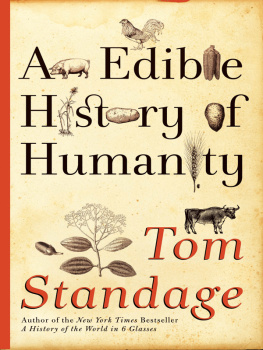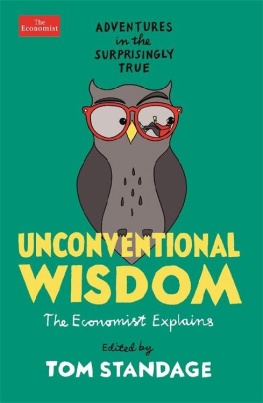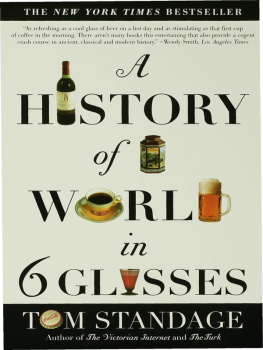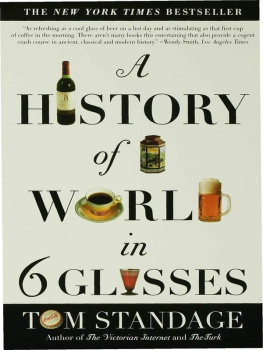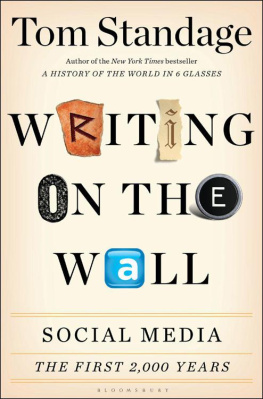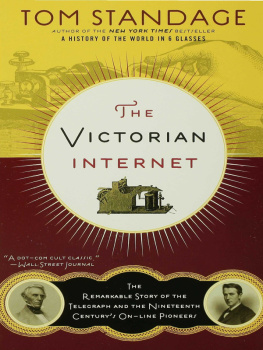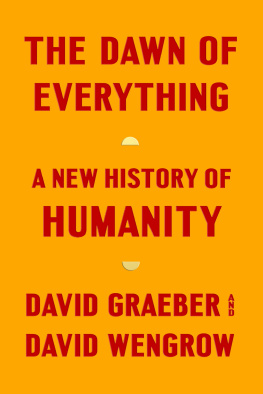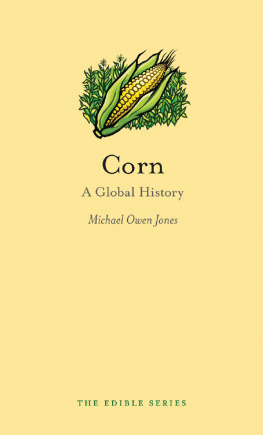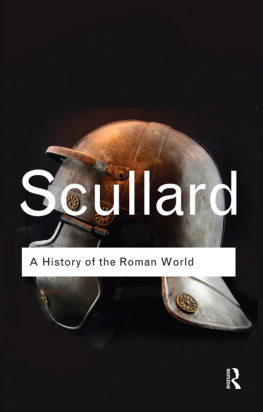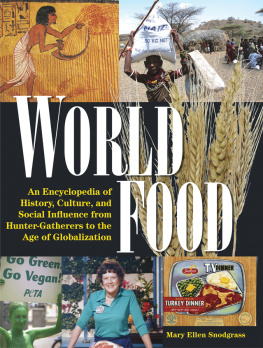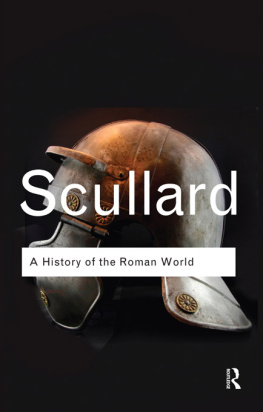AN EDIBLE HISTORY
OF HUMANITY
ALSO BY TOM STANDAGE
A History of the World in 6 Glasses
The Turk
The Neptune File
The Victorian Internet
An EDIBLE
HISTORY of
HUMANITY
TOM STANDAGE

Copyright 2009 by Tom Standage
All rights reserved. No part of this book may be used or reproduced in any manner whatsoever without written permission from the publisher except in the case of brief quotations embodied in critical articles or reviews. For information address Walker & Company, 175 Fifth Avenue, New York, New York 10010.
Art credits: is based in part on a photograph by John Doebley (teosinte.wisc.edu); maps were created by the author; courtesy of the British Library; courtesy of the Mary Evans Picture Library; courtesy of Boeing; courtesy of AIP Emilio Segre Visual Archives, Maria Stein Collection; courtesy of Archiv der Max-Planck-Gesellschaft, Berlin-Dahlem; courtesy of Bettman/Corbis.
Published by Walker Publishing Company, Inc., New York
All papers used by Walker & Company are natural, recyclable products made from wood grown in well-managed forests. The manufacturing processes conform to the environmental regulations of the country of origin.
LIBRARY OF CONGRESS CATALOGING-IN-PUBLICATION DATA
HAS BEEN APPLIED FOR.
eISBN: 978-0-802-71982-9
Visit Walker & Companys Web site at www.walkerbooks.com
First U.S. edition 2009
1 3 5 7 9 10 8 6 4 2
Book design by Simon M. Sullivan
Typeset by Westchester Book Group
Printed in the United States of America by Quebecor World Fairfield
To Kirstin, my partner in foodand everything else
CONTENTS
There is no history of mankind, there are only many histories of all kinds of aspects of human life.
KARL POPPER
The fate of nations hangs upon their choice of food.
JEAN-ANTHELME BRILLAT-SAVARIN
There are many ways to look at the past: as a list of important dates, a conveyor belt of kings and queens, a series of rising and falling empires, or a narrative of political, philosophical, or technological progress. This book looks at history in another way entirely: as a series of transformations caused, enabled, or influenced by food. Throughout history, food has done more than simply provide sustenance. It has acted as a catalyst of social transformation, societal or ganization, geopolitical competition, industrial development, military conflict, and economic expansion. From prehistory to the present, the stories of these transformations form a narrative that encompasses the whole of human history.
Foods first transformative role was as a foundation for entire civilizations. The adoption of agriculture made possible new settled lifestyles and set mankind on the path to the modern world. But the staple crops that supported the first civilizationsbarley and wheat in the Near East, millet and rice in Asia, and maize and potatoes in the Americaswere not simply discovered by chance. Instead, they emerged through a complex process of coevolution, as desirable traits were selected and propagated by early farmers. These staple crops are, in effect, inventions: deliberately cultivated technologies that only exist as a result of human intervention. The story of the adoption of agriculture is the tale of how ancient genetic engineers developed powerful new tools that made civilization itself possible. In the process, mankind changed plants, and those plants in turn transformed mankind.
Having provided the platform on which civilizations could be founded, food subsequently acted as a tool of social organization, helping to shape and structure the complex societies that emerged. The political, economic, and religious structures of ancient societies, from hunter-gatherers to the first civilizations, were based upon the systems of food production and distribution. The production of agricultural food surpluses and the development of communal food-storage and irrigation systems fostered political centralization; agricultural fertility rituals developed into state religions; food became a medium of payment and taxation; feasts were used to garner influence and demonstrate status; food handouts were used to define and reinforce power structures. Throughout the ancient world, long before the invention of money, food was wealthand control of food was power.
Once civilizations had emerged in various parts of the world, food helped to connect them together. Food-trade routes acted as international communications networks that fostered not just commercial exchange, but cultural and religious exchange too. The spice routes that spanned the Old World led to cross-cultural fertilization in fields as diverse as architecture, science, and religion. Early geographers started to take an interest in the customs and peoples of distant lands and compiled the first attempts at world maps. By far the greatest transformation caused by food trade was a result of the European desire to circumvent the Arab spice monopoly. This led to the discovery of the New World, the opening of maritime trade routes between Europe, America, and Asia, and the establishment by European nations of their first colonial outposts. Along the way, it also revealed the true layout of the world.
As European nations vied to build global empires, food helped to bring about the next big shift in human history: a surge in economic development through industrialization. Sugar and potatoes, as much as the steam engine, underpinned the Industrial Revolution. The production of sugar on plantations in the West Indies was arguably the earliest prototype of an industrial process, reliant though it was on slave labor. Potatoes, meanwhile, overcame initial suspicion among Europeans to become a staple food that produced more calories than cereal crops could from a given area of land. Together, sugar and potatoes provided cheap sustenance for the workers in the new factories of the industrial age. In Britain, where this process first began, the vexed question of whether the countrys future lay in agriculture or in industry was unexpectedly and decisively resolved by the Irish Potato Famine of 1845.
The use of food as a weapon of war is timeless, but the largescale military conflicts of the eighteenth and nineteenth centuries elevated it to a new level. Food played an important role in determining the outcome of the two wars that defined the United States of America: the Revolutionary War of the 1770s to 1780s and the Civil War of the 1860s. In Europe, meanwhile, Napoleons rise and fall was intimately connected with his ability to feed his vast armies. The mechanization of warfare in the twentieth century meant that for the first time in history, feeding machines with fuel and ammunition became a more important consideration than feeding soldiers. But food then took on a new role, as an ideological weapon, during the Cold War between capitalism and communism, and ultimately helped to determine the outcome of the conflict. And in modern times food has become a battlefield for other issues, including trade, development, and globalization.
During the twentieth century the application of scientific and industrial methods to agriculture led to a dramatic expansion in the food supply and a corresponding surge in the world population. The so-called green revolution caused environmental and social problems, but without it there would probably have been widespread famine in much of the developing world during the 1970s. And by enabling the food supply to grow more rapidly than the population, the green revolution paved the way for the astonishingly rapid industrialization of Asia as the century drew to a close. Since people in industrial societies tend to have fewer children than those in agricultural societies, the peak in the human population, toward the end of the twenty-first century, is now in sight.
Next page
